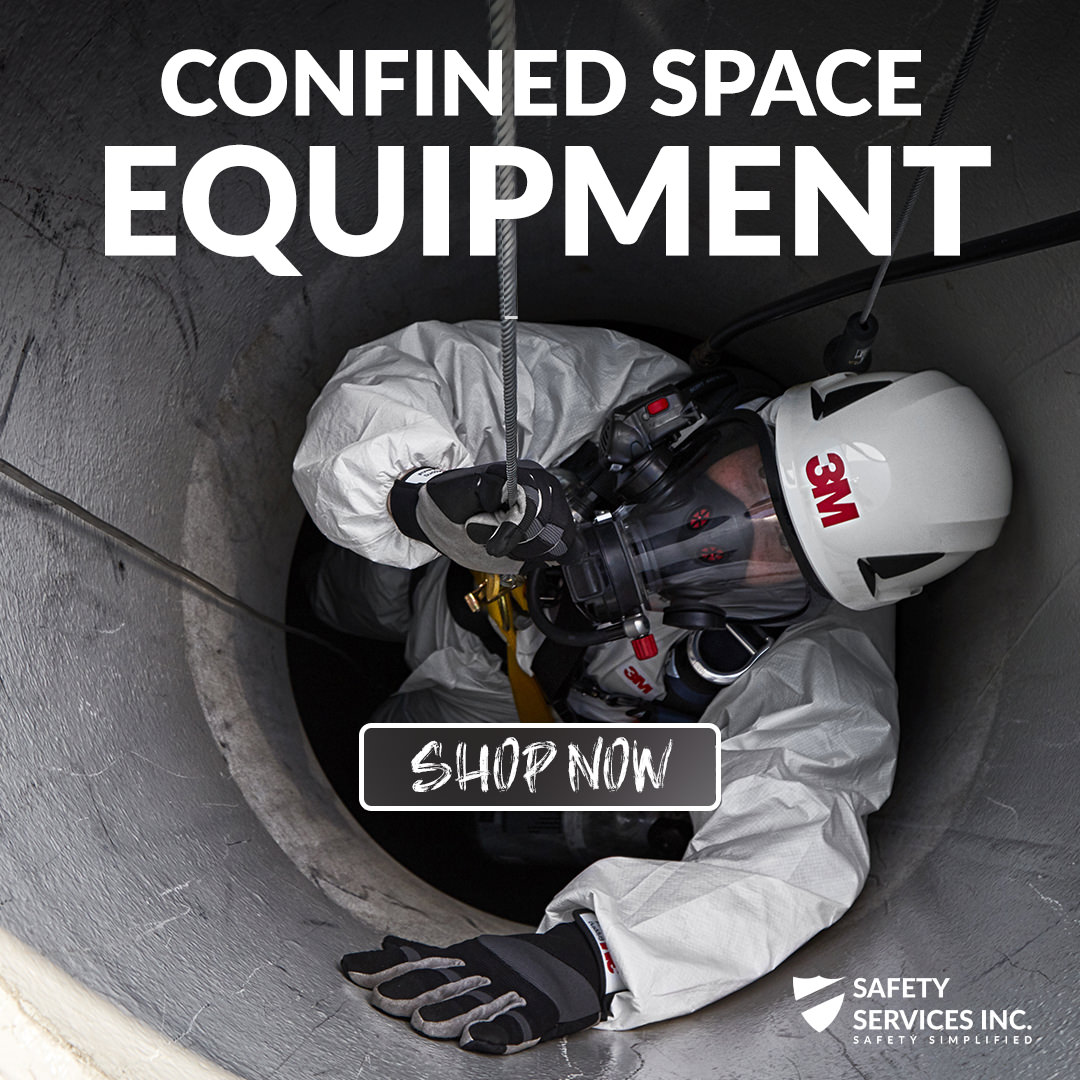Working in a confined space is dangerous enough on its own, but did you know that over 60% of confined space deaths occur among those who are trying to save a compromised employee? The easiest way to reduce that statistic and the high blood pressure of your employees is to procure equipment that allows for a non-entry rescue.
What types of equipment do I need in a confined space?
As ironic as it sounds, confined spaces come in all different shapes and sizes. Your employees could find themselves crawling in underground tunnels or navigating through elevated ductwork. Because the types of confined spaces are so varied, each worker must be provided with the correct PPE. OSHA requires that all workers near a confined space, even those that do not enter it, must wear fall protection equipment. Plus, it has been months since your department’s last accident. Do you really want to erase your streak? Take a look at these confined space equipment options.
Harness
A harness is a necessary place to start when it comes to confined space equipment. It’s difficult to successfully rescue anyone without a harness unless they happen to have a metal plate in their head and you own a very powerful magnet (just kidding). Therefore, OSHA requires that any authorized entrant of a permit-required confined space must wear a chest or full-body harness with an attached retrieval line. If the worker can demonstrate that wearing a harness is creating a greater hazard, they may instead use wristlets. There are specific harnesses available for confined space retrieval. These harnesses contain D-rings on both shoulder straps that allow for a connected employee to be lifted and lowered when working vertically.
Tripods
No, your uncle’s camcorder stand cannot be used for a rescue. Confined space tripod systems do look like a large, industrial version of a camera tripod, but they are outfitted with a built-in pulley system and can withstand up to 5,000 pounds. Tripod are popular PPE for confined spaces since their shape allows them to be mounted over small entrances and exits that need to be entered vertically, like manholes. If a properly attached employee becomes stuck in a confined space, a tripod can be used to rescue them without having to send down another worker.
Winches
When a worker needs to be lifted vertically more than five feet, OSHA requires that a mechanical device, like a winch, is available for recovering the employee. A winch, which looks like the handle of a fishing pole, connects to a tripod and contains a synthetic or steel line and a crank that can tighten or release the line. However, unlike fishing poles, winches can also be powered (with a powered fishing pole, you could catch an even bigger fish than your coworker). Powered retrieval winches can be dangerous if not used properly, and they are recommended for depths greater than 50 feet.
Blower fan
Atmospheric hazards, like toxic fumes and a lack of oxygen, increase the chance of injury and even fatalities. To bring in fresh air and force out pollutants, a blower fan can be used. Confined space blower fans are not the type of thing you use to cool off on a warm, summer night, as they have powerful outputs. Some confined spaces, like sewers, contain highly combustible fumes and materials. In those instances, it would be wise to use an explosion-proof confined space blower, which is made of non-static plastic and contains an explosion-proof motor that will not spark.
Gas monitor
Unfortunately, it is common for workers to come into contact with dangerous airborne contaminants in confined spaces. To reduce the risks to employees, it is required to observe the air quality before and during entry to a confined space. As a life-saving measure, workers should be outfitted with portable gas monitors that can be easily checked and heard. Gas monitors contain sensors that quickly alert if oxygen levels get too low or toxic and combustible gas levels reach too high. Monitors come outfitted with multiple sensors and alert capabilities, so it is important to choose one appropriate for your worksite.
Are your employees protected?
Trying to decipher the correct PPE for your employees can make you feel like the walls are caving in. At Safety Services Inc., we know that you have enough to worry about, and choosing the right equipment shouldn’t be one of them.
Click here to learn more about how we can support your confined space ppe needs.


